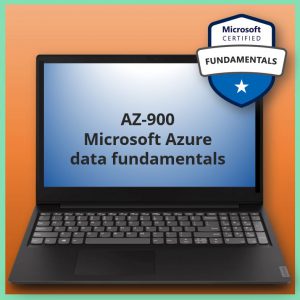Aangeboden leervormen

Data Mining, Predictive Analytics with Microsoft Analysis Services and Excel PowerPivot (55040)
Course Description
This three-day course will introduce the students to the concepts of data mining, machine learning and predictive analytics utilizing the Microsoft toolsets including SQL Server Analysis Services and Excel with PowerPivot and the Data Mining Add-ins.
At Course Completion
After completing this course, students will be able to:
· Have a firm understanding of the concept of data mining.
· Explore the user interface.
· Use offline mode and immediate mode.
· Create and configure a data source.
· Create and configure data view.
· Explore data.
· Create and configure named calculation.
· Create and configure named queries.
· Walk-through a project to completion.
· Explore the models.
· Compare mining structures.
· Use cross validation.
· Create reports using Reporting Services.
· Save queries.
· Save results to the database.
· Create multiple nested tables off of a case table.
· Use Microsoft Association Rules Algorithm.
· Use Microsoft Sequence Clustering Algorithm.
· Use Microsoft Time Series Algorithm.
· Use Microsoft Neural Network Algorithm.
· Properly prepare data for mining.
· Use Model Usage—Browse.
· Use Model Usage—Query.
· Use Accuracy and Validation.
· Use Decision Trees.
· Use Logistic Regression.
· Use Nave Bayes.
· Use Neural Network.
· Use Estimate Tool.
· Use Cluster.
· Use Associate Tool.
· Use Forecast Tool.
· Use Table Analysis Tools.
· Use Visio Add-In.
· Complete five different business scenarios that further reinforce the concepts learned.

Voor wie
This course is intended for Power Users, IT Professionals, Report Developers, BI Professionals, Project Managers and Team Leads interested in exploring the Microsoft toolsets for data mining, machine learning, and predictive analytics.
Programma
Module 1: Introduction
This module explains how the class will be structured and introduces course materials and additional administrative information.
Lessons
· Introduction
· Course Materials
· Facilities
· Prerequisites
After completing this module, students will be able to:
· Successfully log into their virtual machine.
· Have a full understanding of what the course intends to cover.
Module 2: Data Mining Concepts
This module will get students grounded in the terminology and concepts commonly utilized in data mining.
Lessons
· Concepts and Terminology
· Data Mining and Results
· CRISP-DM
· Business Problems for Data Mining
· Models, Induction, and Prediction
· Data Mining Tasks
· Key Concepts
Lab : Data Mining Concepts
· Group discussion of data mining examples
After completing this module, students will be able to:
· Have a firm understanding of the concept of data mining.
Module 3: SQL Server Analysis Services Data Mining Tools
This module familiarizes the student with the data mining tools in SQL Server Analysis Services.
Lessons
· Introduction to SQL Server Data Tools
· Project Walk-Through
· Stepping Through the Data Mining Wizard
· Testing and Validation of Mining Models
· Cross Validation
· The Mining Model Prediction Tab
· Reports
Lab : SQL Server Analysis Services Data Mining Tools
· The User Interface
· Offline Mode and Immediate Mode
· Data Source
· Data View
· Exploring Data
· Named Calculation
· Named Queries
· Project Walk-Through to Completion of the Structure Parts 1 and 2
· Explore the Models
· Compare Mining Structures
· Cross Validation
· Creating Reports Using Reporting Services
· Saving Queries
· Saving Results to the Database
· Multiple Nested Tables
After completing this module, students will be able to:
· Explore the user interface.
· Use offline mode and immediate mode.
· Create and configure a data source.
· Create and configure data view.
· Explore data.
· Create and configure named calculations.
· Create and configure named queries.
· Walk-through a project to completion.
· Explore the models.
· Compare mining structures.
· Use cross validation.
· Create reports using Reporting Services.
· Save queries.
· Save results to the database.
· Create multiple nested tables off of a case table.
Module 4: The Microsoft Data Mining Algorithms
This module explains the Microsoft implementations of the generic types of algorithms uses in data mining. The students will work with each algorithm and implement an example of each.
Lessons
· Types of Data Mining Algorithms
· Microsoft Decision Trees Algorithm
· Microsoft Linear Regression Algorithm
· Microsoft Clustering Algorithm
· Microsoft Nave Bayes Algorithm
· Microsoft Association Algorithm
· Microsoft Sequence Clustering Algorithm
· Microsoft Time Series Algorithm
· Microsoft Neural Network Algorithm
· Microsoft Logistic Regression Algorithm
Lab : The Microsoft Data Mining Algorithms
· Microsoft Association Rules Algorithm
· Microsoft Sequence Clustering Algorithm
· Microsoft Time Series Algorithm
· Microsoft Neural Network Algorithm
After completing this module, students will be able to:
· Use Microsoft Association Rules Algorithm.
· Use Microsoft Sequence Clustering Algorithm.
· Use Microsoft Time Series Algorithm.
· Use Microsoft Neural Network Algorithm.
Module 5: Excel PowerPivot Data Mining Add-ins
This module switches to the use of Excel with PowerPivot and the Data Mining Add-ins. Here the students will see the different capabilities between Excel and SQL Server Analysis Services and learn to use the data mining features of Excel and generate consumable reports from analytics and data mining.
Lessons
· Data Mining Tab
· Connection
· Data Preparation
· Management
· Model Usage
· Accuracy and Validation
· Data Modeling
· Visio Data Mining Add-In
Lab : Excel PowerPivot Data Mining Add-ins
· Data Preparation
· Model Usage—Browse and Document Model
· Model Usage—Query
· Accuracy and Validation
· Decision Trees
· Logistic Regression
· Nave Bayes
· Neural Network
· Estimate Tool
· Cluster
· Associate Tool
· Forecast Tool
· Table Analysis Tools
· Visio Add-In
After completing this module, students will be able to:
· Properly prepare data for mining.
· Use Model Usage—Browse and Document Model.
· Use Model Usage—Query.
· Use Accuracy and Validation.
· Use Decision Trees.
· Use Logistic Regression.
· Use Nave Bayes.
· Use Neural Network.
· Use Estimate Tool.
· Use Cluster.
· Use Associate Tool.
· Use Forecast Tool.
· Use Table Analysis Tools.
· Use Visio Add-In.
Module 6: Concept Reinforcement Scenarios
This module consists of five scenarios to help reinforce the concepts covered in this course.
Lessons
· Scenario 1
· Scenario 2
· Scenario 3
· Scenario 4
· Scenario 5
Lab : Concept Reinforcement Scenarios
· n/a
After completing this module, students will be able to:
· Complete five different business scenarios that further reinforce the concepts learned.
Voorkennis
Before attending this course, students must have:
· Experience with Excel
· Basic understanding of business analytics
Examen
NVT
Duur training
Open leercentrum: 3 dagen







